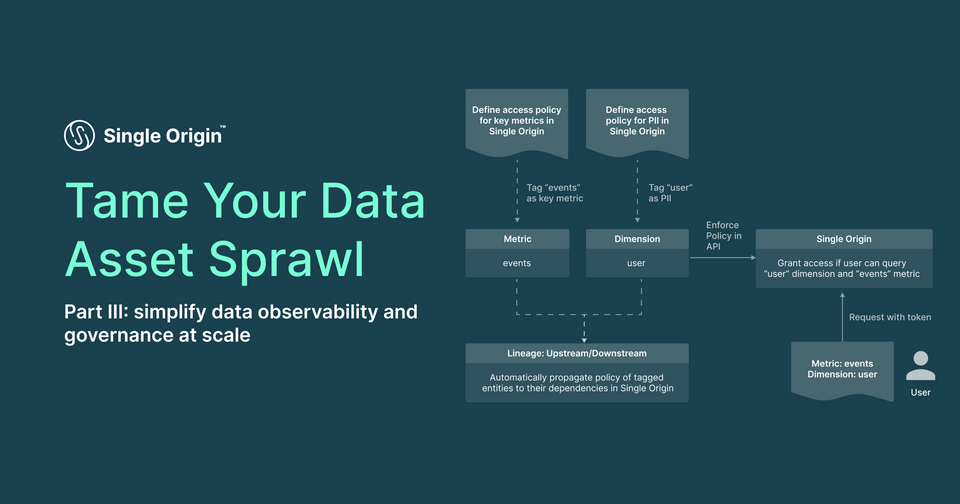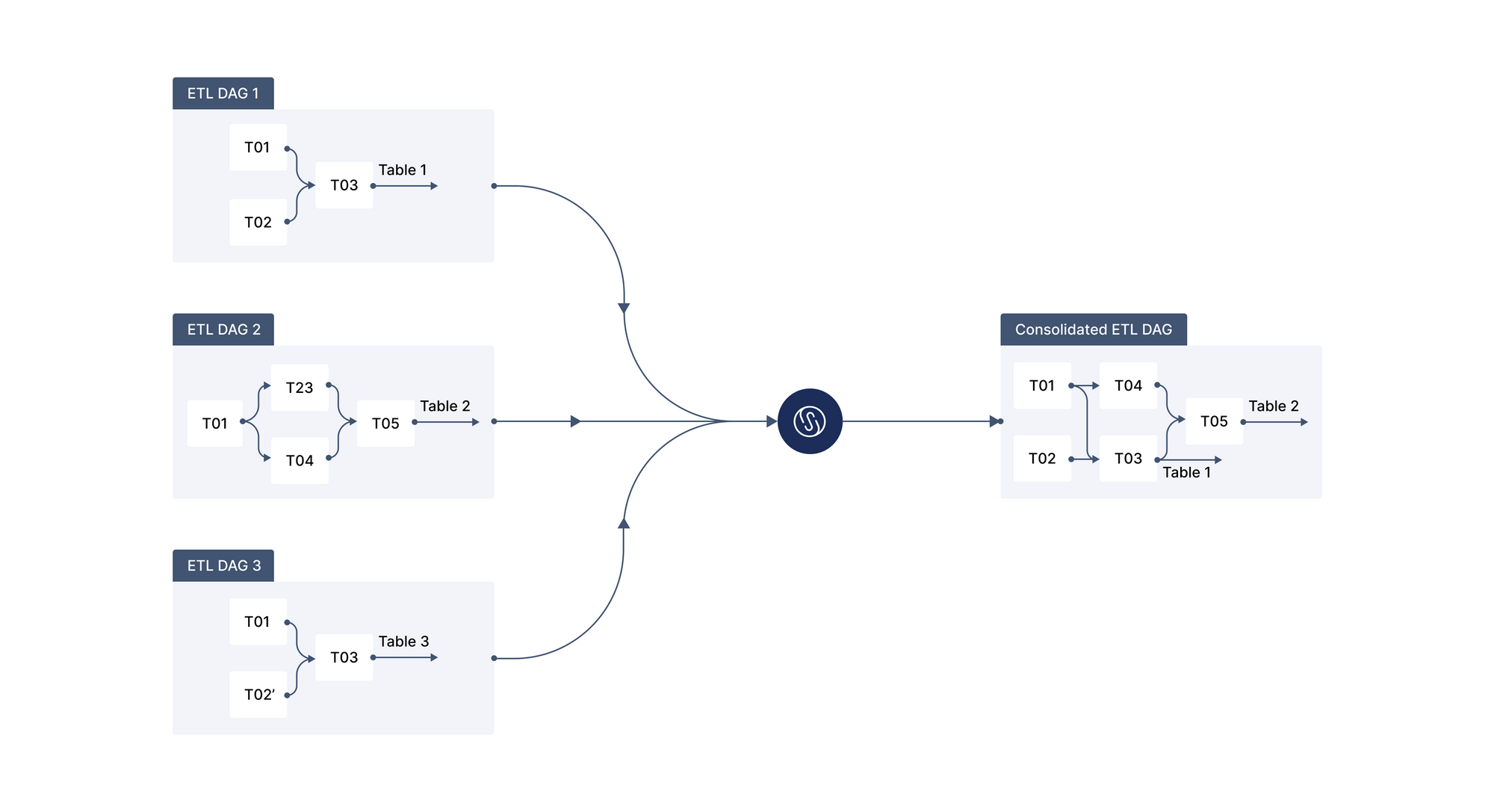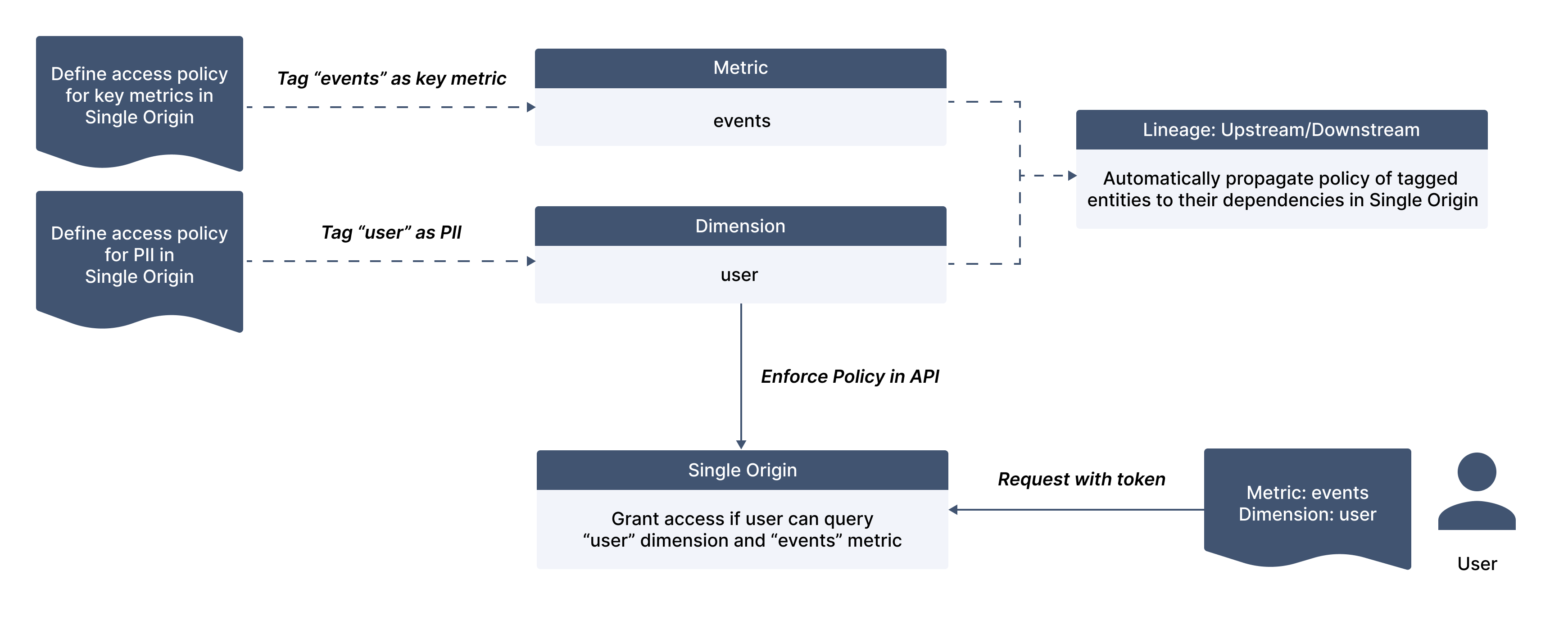Tame Your Data Asset Sprawl Part III: Simplify Data Observability and Governance at Scale

Intro
In the second post of this series, we discussed how semantic management on Single Origin helps companies streamline their data pipelines and save on storage costs. Today, we’re looking at how automated semantic management in Single Origin can simplify data observability and governance at scale.
Simplify your data lineage to improve observability
Field-level lineage in Single Origin allows data operators to trace data quality issues upstream to their source fields. Single Origin then goes one step further by automatically identifying backward-incompatible changes to downstream fields, preventing breaking changes in the first place.
The current state of your lineage graph may be complex and unwieldy. Single Origin’s semantic management engine simplifies your lineage graph by minimizing redundancies and reusing logic wherever possible. Fewer nodes in your graph mean a more maintainable state, while fewer assets mean easier debugging and observability.

The Current State of Access Control
It’s more important than ever to ensure access to sensitive data is given to those who need it. Unfortunately, the fragmented nature of modern data tools makes access control difficult and time-consuming. For most organizations today, access control is done at the table level. This approach comes with some significant drawbacks:
- Columns with sensitive data, including personally identifiable information, are often renamed as they are transformed by pipelines, making manually applying access control challenging.
- Table-level controls require a high level of coordination between data producers and consumers to know all your data policies and track down every instance of specific data, generating friction and inefficiencies.
Access Control in Single Origin
Single Origin offers a different approach with metric and dimension level access control. Here’s how it works:
- Users create standardized definitions for their metrics and dimensions by importing SQL into Single Origin. Once a definition is created, it is easy to find and collaborate.
- Access control is then defined on these standardized definitions.
- Single Origin automatically propagates those policies across the entire system using field-level lineage, from upstream datasets to downstream dashboards. And because lineage is automatically refreshed, the existing access control is automatically applied when new instances of the definition appear.
This “define once, enforce everywhere” approach offers more granular access control with less overhead.

Single Origin offers a better way to manage your data ecosystem by consolidating and simplifying your data assets and unlocking quality and governance through lineage. Onboarding into Single Origin is as simple as setting up a connector to your warehouse and pointing to your existing query logs.
Reach out today to try a demo and learn more about simplifying your data flows and access controls.

